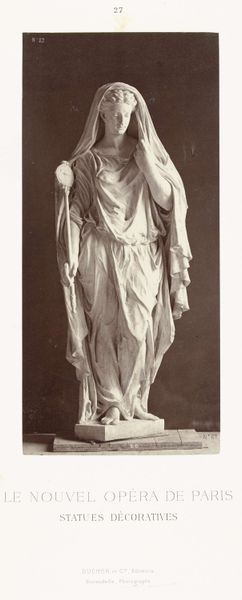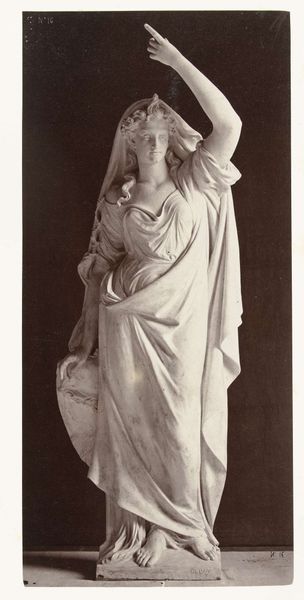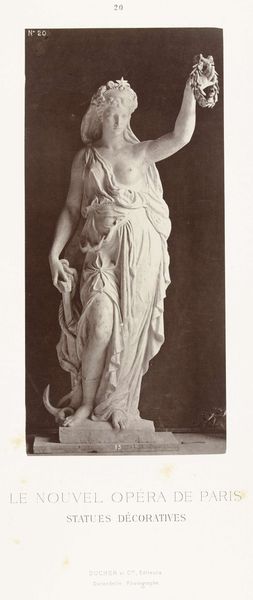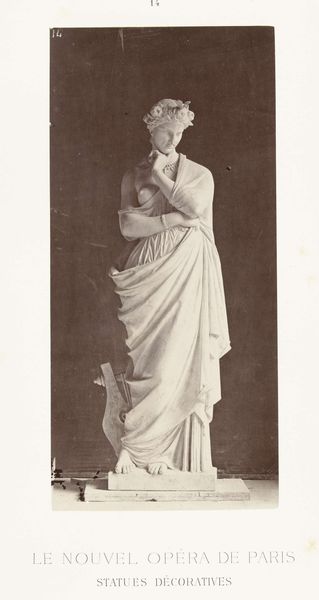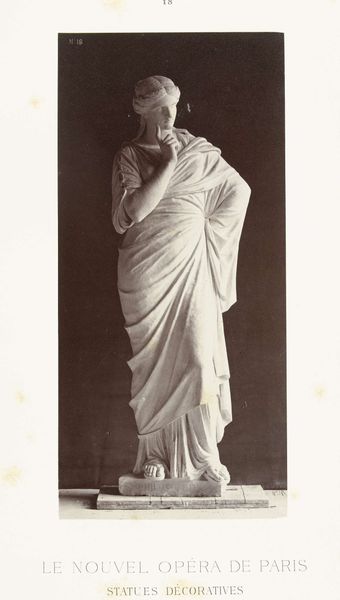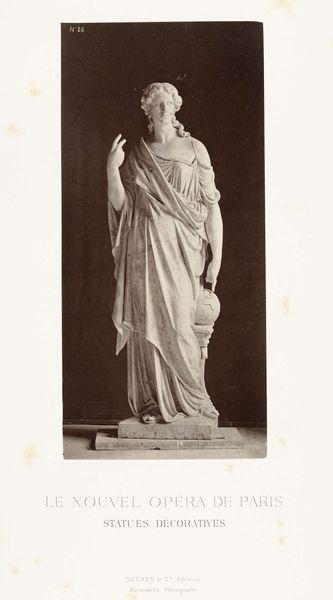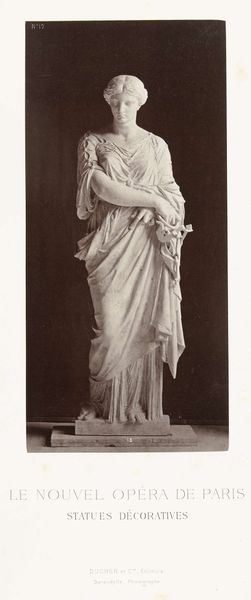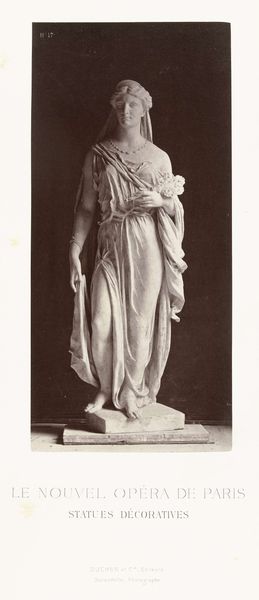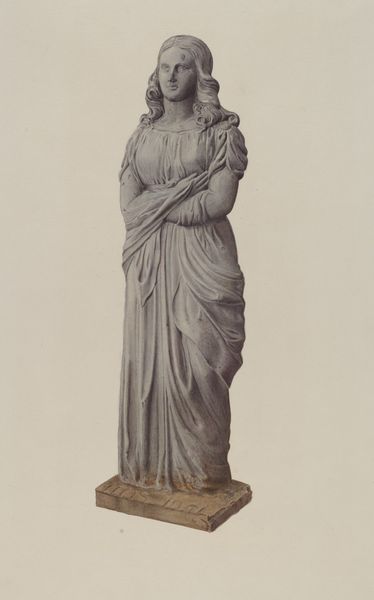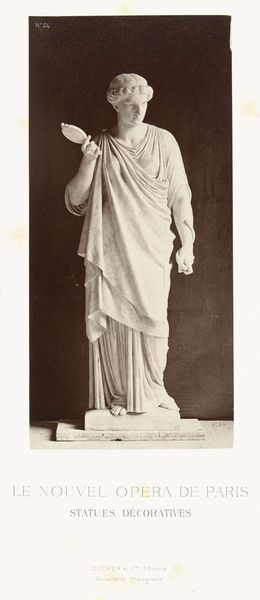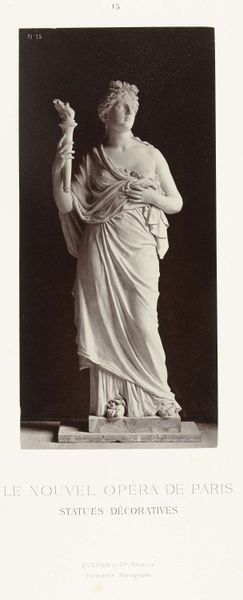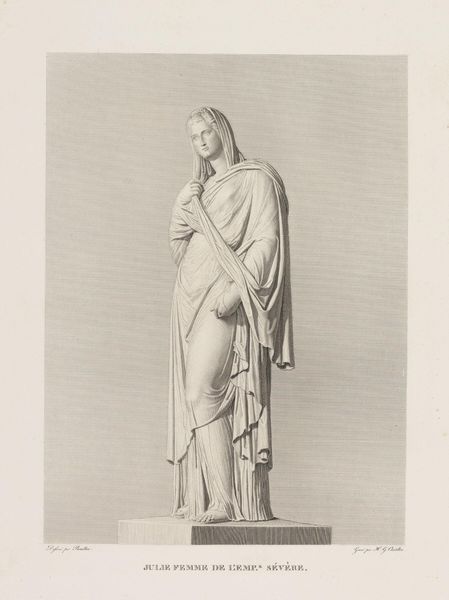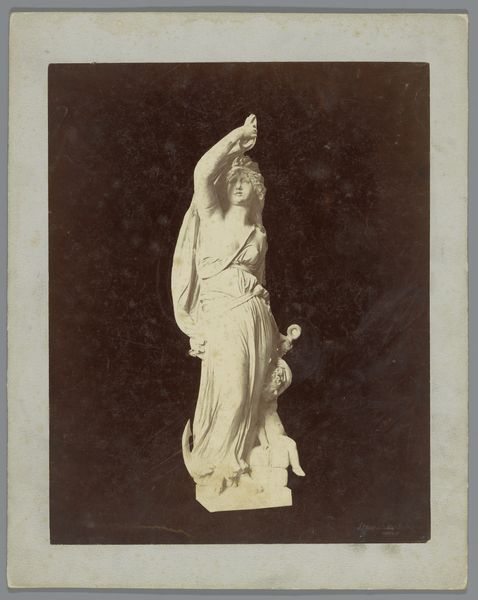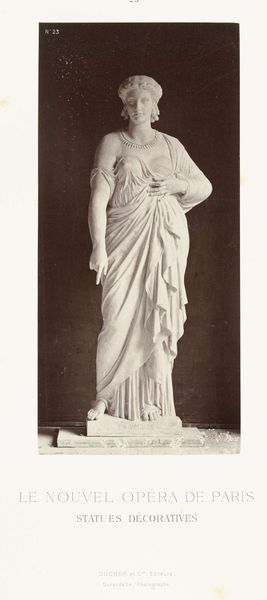
Marmeren beeld van een vrouw in toga met over elkaar geslagen armen. c. 1878 - 1881
0:00
0:00
photography, sculpture, marble
#
portrait
#
classical-realism
#
photography
#
sculpture
#
academic-art
#
marble
#
statue
Dimensions: height 275 mm, width 128 mm, height 620 mm, width 438 mm
Copyright: Rijks Museum: Open Domain
Curator: What strikes me most about this photographic print, dating back to the late 1870s or early 1880s, by Louis-Émile Durandelle, is the subject itself: a marble sculpture depicting a woman in a toga, arms crossed rather formally. Editor: It exudes a stoic grace, doesn't it? There's a simplicity in the draping of the toga that emphasizes the carved texture of the marble; but the image also has a kind of cool reserve... not overly inviting. Curator: Precisely! Durandelle, known for documenting the construction of the Palais Garnier, was likely commissioned to capture this statue among others intended for the New Paris Opera House. This was a period of intense national self-fashioning and rebuilding. These sculptural elements all were deliberately meant to symbolize Parisian grandeur. Editor: Ah, so the medium of photography here documents another form of making. How interesting that Durandelle’s print is cataloging this… product? I wonder about the artisans involved in sculpting the original piece – where were they from? Did their social status affect their craft? Curator: Those questions of labor and its physical realization through material processes are important, as is thinking about who these statues served once the Opera opened. Beyond mere adornment, they presented an idealized vision to the opera-goers, many of whom would be ascending the social ladder. This carefully crafted symbolism bolstered the values and ambitions of the burgeoning bourgeoisie, as did the design and execution of the building, stage and all. Editor: It brings up an interesting dynamic. The print allows us to access this sculpture even outside of that physical space and the original audience intended to experience it. I suppose that in itself democratizes access to art in ways the opera house didn't at the time. Curator: An excellent point! While originally meant to reinforce a specific social structure within a particular space, its reproduction invites entirely new dialogues around class, labor, and aesthetics. Editor: This photograph certainly helps clarify the multi-layered intentions embedded in art and how, in time, we, too, transform the reception of such artworks. Curator: Absolutely. It really underlines how the contexts surrounding artworks are constantly changing and re-shaping art’s meaning for new audiences.
Comments
No comments
Be the first to comment and join the conversation on the ultimate creative platform.
